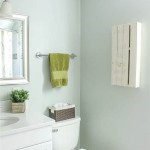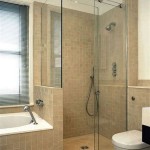Best Bathroom Vanity Top Materials
Bathroom vanity tops endure significant wear and tear, exposed to water, cosmetics, and cleaning products daily. Selecting the right material is crucial for longevity, aesthetics, and ease of maintenance. This article explores several popular vanity top materials, outlining their advantages and disadvantages to assist homeowners in making informed decisions.
Granite: A natural stone, granite offers exceptional durability and resistance to scratches and heat. Each slab possesses unique veining and coloration, providing a high-end, luxurious look. Granite requires sealing to prevent staining and should be cleaned with pH-neutral cleaners to avoid damage. While it represents a higher initial investment, its longevity and aesthetic appeal make it a popular choice.
Marble: Another natural stone option, marble exudes elegance and sophistication. Known for its distinctive veining and smooth, cool surface, marble creates a classic and timeless bathroom aesthetic. However, marble is more porous than granite, making it susceptible to staining and etching from acidic substances. It requires regular sealing and careful maintenance to preserve its pristine appearance.
Quartz: Engineered stone, or quartz, consists of crushed quartz bound together with resins. This manufacturing process results in a non-porous surface highly resistant to stains, scratches, and bacteria. Quartz requires no sealing and is available in a wide array of colors and patterns, offering design versatility. While generally more affordable than natural stone, quartz can be susceptible to scorching from high heat.
Solid Surface: Solid surface materials, like Corian, are composed of acrylic polymers and mineral fillers. They provide a seamless, non-porous surface that is easy to clean and maintain. Scratches and minor damage can often be repaired by sanding and buffing. Solid surface materials are available in various colors and can be molded into integrated sinks and backsplashes, creating a cohesive and modern look.
Ceramic: A cost-effective option, ceramic vanity tops are made from fired clay and coated with a durable glaze. They are resistant to scratches, stains, and fading, and are available in a wide variety of colors and styles. However, ceramic can chip or crack if subjected to heavy impact. The grout lines between tiles can also be prone to staining and require regular cleaning.
Porcelain: Similar to ceramic, porcelain is also made from fired clay but is fired at a higher temperature, resulting in a denser and more durable material. Porcelain is highly resistant to scratches, stains, and moisture, making it a suitable choice for high-traffic bathrooms. It is available in various colors and patterns, including options that mimic the look of natural stone.
Laminate: Laminate vanity tops consist of a particleboard core covered with a decorative plastic laminate layer. They are a budget-friendly option available in a wide range of colors and patterns. Laminate is relatively easy to clean but can be susceptible to scratches, chipping, and water damage if the edges are not properly sealed.
Concrete: For a unique and industrial aesthetic, concrete vanity tops offer a customizable option. Concrete can be poured and molded into various shapes and sizes, and can be stained or pigmented to achieve desired colors. It is durable and heat-resistant but requires sealing to prevent staining and cracking. Concrete can also be heavy, requiring sturdy cabinetry for support.
Wood: Wood vanity tops bring warmth and natural beauty to the bathroom. Options like teak and cedar are naturally water-resistant and offer a luxurious aesthetic. Wood requires regular sealing and oiling to maintain its water resistance and prevent damage. It is also more susceptible to scratches and dents compared to other materials.
Cultured Marble: A more affordable alternative to natural marble, cultured marble is made from a mixture of crushed marble dust, resins, and pigments. It offers a similar aesthetic to natural marble but is less durable and more prone to scratching and staining. Cultured marble requires less maintenance than natural marble but still benefits from periodic sealing.
Choosing the Right Material: Selecting the best bathroom vanity top material depends on several factors, including budget, desired aesthetic, and maintenance requirements. Considering the advantages and disadvantages of each material will help homeowners choose the perfect vanity top to complement their bathroom design and lifestyle.
Maintenance Considerations: Proper maintenance is essential for preserving the appearance and longevity of any vanity top material. Regular cleaning with appropriate cleaners, sealing as needed, and prompt attention to spills will help maintain the beauty and functionality of the vanity top for years to come.
What Are The Best Materials For Bathroom Vanity Countertops

7 Best Bathroom Vanity Top Materials Which Is For Your Home The Reno Super

What Are The Best Materials For Bathroom Vanity Countertops

Granite Vs Quartz A Bathroom Countertop Comparison

Premium Bathroom Vanity Top Materials 10 Ways To Styles Them
:strip_icc()/102130266-3174ac7d31314c7abfc80a1b65a11dd6.jpg?strip=all)
18 Luxurious Bathroom Countertop Ideas For All Budgets

7 Best Bathroom Vanity Top Materials Which Is For Your Home The Reno Super

Comparing Bathroom Countertop Materials Which Is Right For You Ranney Blair Weidmann

Which Vanity Top Material Is Right For You

Bathroom Countertops Guide Best Materials Types And Cost Modernize
See Also







